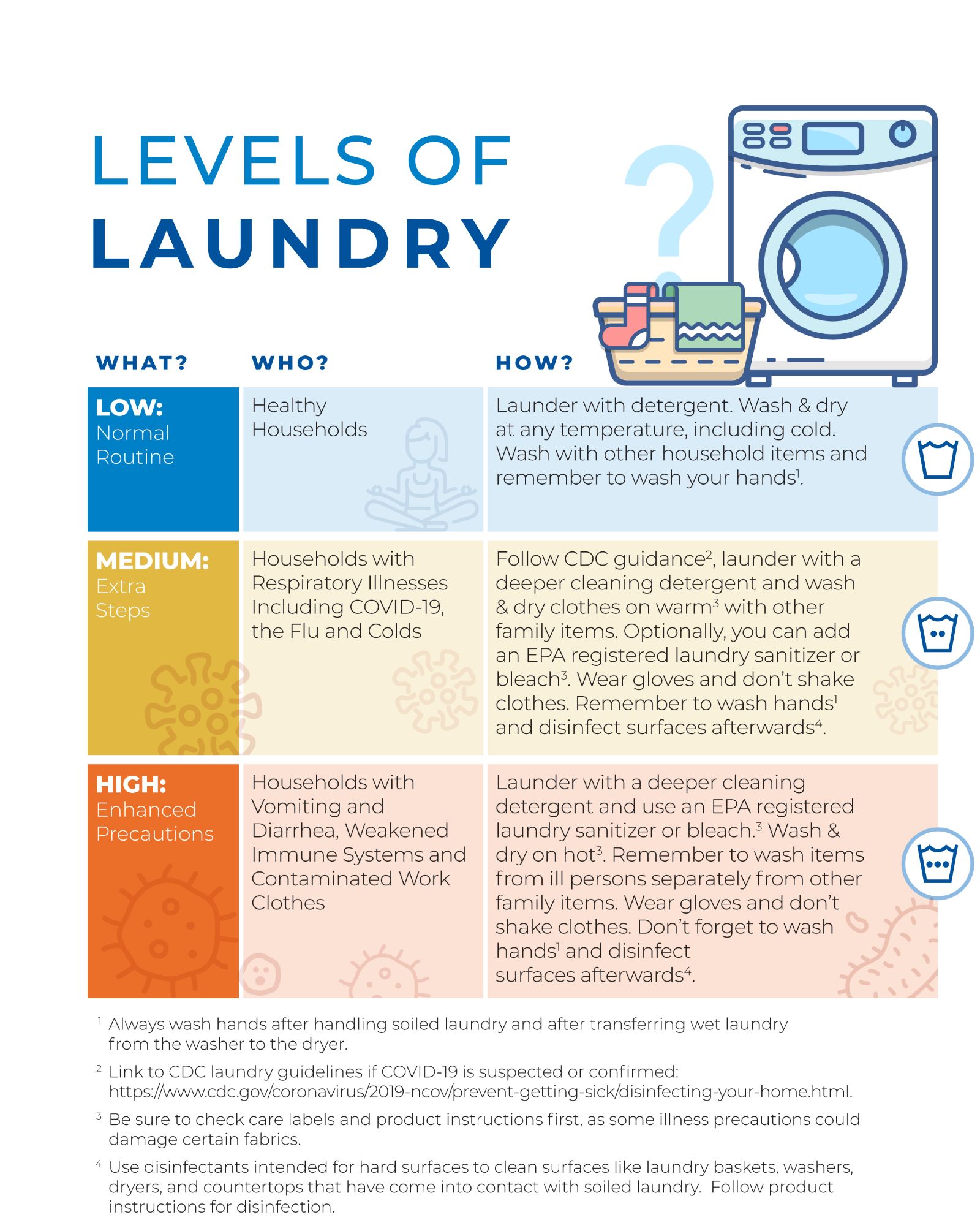Caring for different fabrics can be confusing. Each fabric has its own needs.
Understanding the best practices for washing and caring for various fabrics ensures your clothes stay fresh and last longer. Proper care prevents damage and helps maintain the fabric’s quality and color. This guide will help you navigate the do’s and don’ts of fabric care.
From delicate silks to sturdy denims, each fabric type has specific needs. Knowing these can save you time and money. So, read on to learn how to treat your favorite garments right. Your clothes will thank you!
Read More: Washeterias Near Me / Laundromat Tyler TX / Best Laundry Services / Self Service Laundry / Top Rated Washers & Dryers
Read More: vitacures health blog, digital marketing services / cake gallery
Check our shop: Magic Wash Laundromat
Fabrics Type
Different fabrics require specific washing and care methods. Cotton benefits from warm water, while wool needs gentle handwashing. Silk often requires dry cleaning.
When it comes to washing and caring for different fabrics, understanding the fabric types is essential. Each type of fabric has unique characteristics and requires specific care. This ensures that your clothes remain in good condition and last longer. Let’s dive into the best practices for two main categories: natural fibers and synthetic fibers.
Natural Fibers
Natural fibers include cotton, wool, silk, and linen. These fabrics are derived from plants and animals, making them biodegradable. Here’s how you can care for them:
- Cotton: Wash cotton in warm water. It can handle a bit of agitation, so it’s safe to use the washing machine. Avoid using bleach on colored cotton items to prevent fading.
- Wool: Wool needs gentle care. Hand wash in cold water or use a delicate cycle in the washing machine. Lay flat to dry to prevent stretching.
- Silk: Silk is delicate. Hand wash in lukewarm water with mild detergent. Avoid wringing out silk. Instead, press out excess water and hang to dry.
- Linen: Linen can be washed in warm or cold water. Use a gentle cycle and avoid overcrowding the washing machine. Iron while slightly damp for best results.
Have you ever ruined a wool sweater by tossing it in the dryer? It’s a common mistake. Taking the time to understand fabric care can save your favorite garments.
Synthetic Fibers
Synthetic fibers include polyester, nylon, acrylic, and spandex. These fabrics are man-made and often more durable than natural fibers. Here’s how you can care for them:
- Polyester: Polyester is durable and can be washed in warm water. It’s resistant to shrinking, so machine drying is generally safe. Avoid high heat, as it can damage the fibers.
- Nylon: Wash nylon in cold water to prevent damage. Air dry or tumble dry on low heat. High temperatures can cause nylon to lose its shape.
- Acrylic: Acrylic can be washed in warm water. Use a gentle cycle and avoid high heat when drying. Acrylic tends to pill, so turn garments inside out before washing.
- Spandex: Spandex requires cool water for washing. Avoid using fabric softeners, as they can break down the fibers. Air dry or use low heat in the dryer.
Have you noticed your spandex leggings losing their stretch after a few washes? It’s likely due to improper care. Treating synthetic fibers correctly will maintain their durability and appearance. Are there specific fabric types you struggle with? Share your experiences in the comments and let’s help each other keep our clothes looking their best!
Washing Instructions
Proper washing instructions are crucial for maintaining the quality of different fabrics. Following specific guidelines ensures your clothes remain fresh and last longer. Below, we’ll discuss the best practices for washing different fabrics, focusing on temperature guidelines and detergent choices.
Temperature Guidelines
Temperature plays a significant role in washing clothes. Hot water is ideal for white clothes and heavily soiled items. Cold water is better for delicate fabrics and bright colors. Warm water works well for most fabrics, providing a balance between cleaning and fabric care.
Always check the care label on your garments. It provides the recommended temperature for washing. Ignoring these guidelines can lead to shrinkage, fading, or damage. For delicate items, consider washing them by hand with cold water. This helps preserve their shape and texture.
Detergent Choices
Choosing the right detergent is essential. Different fabrics require different types of detergents. For everyday clothes, a regular detergent works well. Use mild detergents for delicate fabrics like silk and wool. These detergents are gentle and prevent damage.
Consider using detergents specifically designed for sensitive skin if you have allergies. Eco-friendly detergents are a great choice for those who prefer natural products. Avoid using too much detergent. It can leave residue on clothes and cause skin irritation. Always follow the instructions on the detergent package for the best results.
Drying Techniques
Proper drying methods are essential for maintaining the quality of different fabrics. Always air dry delicate fabrics, while sturdy materials can handle machine drying.
Drying your fabrics properly is crucial to keep them looking fresh and lasting longer. Choosing the right drying technique can make a big difference. Let’s explore the best practices for drying your fabrics, focusing on air drying and machine drying. ###
Air Drying
Air drying is a gentle method that works well for delicate fabrics. It helps maintain the shape and prevents shrinkage. Hang your clothes on a clothesline or drying rack. Spread them out to avoid wrinkles. Place heavy items flat on a towel to prevent stretching. Use clothespins to secure lightweight items. Avoid direct sunlight for dark or bright colors to prevent fading. I remember my favorite cashmere sweater kept its softness and shape because I always air-dried it. This technique is perfect for wool, silk, and other delicate fabrics. ###
Machine Drying
Machine drying is convenient for most of your laundry. It’s quick and effective but needs some attention to detail. Use the right heat setting. High heat can damage fabrics. Always check care labels. I learned the hard way when I shrunk my favorite cotton shirt. Now, I use low heat for cotton and delicate settings for synthetic fabrics. Add dryer balls to your load. They reduce drying time and prevent clumping. Always remove clothes promptly to reduce wrinkles and static. Do you have a favorite drying technique that works wonders for your fabrics? Share your thoughts and tips! Proper drying methods can make a significant difference in the longevity of your clothes. Whether you prefer air drying or machine drying, following these best practices ensures your fabrics stay in great condition.

Credit: automaticlaundry.com
Stain Removal
Stain removal can be a daunting task. Different fabrics require unique approaches. Using the wrong method can set the stain permanently. Understanding the type of stain is crucial. Each stain needs a specific solution to remove it effectively.
Common Stains
Stains from food, drinks, and ink are common. Grass stains appear on clothes after outdoor activities. Blood stains occur from minor injuries. Oil stains are frequent in kitchens. Knowing what caused the stain helps in its removal.
Effective Solutions
For food and drink stains, use cold water. Blot the stain gently. Avoid rubbing, as it can spread the stain. Use a mild detergent. For ink stains, use rubbing alcohol. Dab it on the stain with a cotton ball. For grass stains, use white vinegar. Apply it directly to the stain. For blood stains, use cold water and hydrogen peroxide. Soak the fabric and rinse well. For oil stains, use baking soda. Sprinkle it on the stain and let it sit. Wash as usual after.
Ironing Tips
Proper care for fabrics ensures longevity. Wash delicate materials in cold water. Use gentle cycles for synthetic fabrics.
Ironing Tips Ironing can be a chore or an art, depending on how you look at it. Imagine the satisfaction of a crisp shirt or perfectly pressed pants. But, getting that flawless look requires the right techniques. Let’s dive into some practical ironing tips that will make your clothes look their best and keep them in great condition.
Temperature Settings
One of the key aspects of ironing is knowing the right temperature for each fabric. Using the wrong temperature can ruin your clothes. Always check the care label on your garment. Labels often provide specific ironing instructions. For instance, cotton can handle high heat, while silk needs a much cooler setting. If in doubt, start with a lower temperature. You can always increase the heat if necessary. This cautious approach prevents scorching and other damage.
Ironing Different Fabrics
Different fabrics require different ironing techniques. Let’s look at how to handle some common ones. Cotton: Cotton fabrics can tolerate high temperatures. Use a steam setting to help remove wrinkles. Press down firmly and move the iron in small sections for the best results. Silk: Silk is delicate and needs a low-heat setting. Iron on the reverse side to avoid direct heat on the fabric. Use a pressing cloth for extra protection and avoid steam to prevent water spots. Wool: Wool items should be ironed using a medium setting. Steam is your friend here. Place a damp cloth over the fabric to avoid direct contact. This method helps to prevent shine and flattening of the wool fibers. Polyester: Polyester blends need a low to medium heat. High temperatures can cause polyester to melt. Use a pressing cloth and a gentle touch to avoid damaging the fabric. Linen: Linen is best ironed when slightly damp. Use a high heat setting and lots of steam. Press down firmly but do not drag the iron. Instead, lift and press for the smoothest results. Do you have any specific fabric that always gives you trouble while ironing? Share your experience and tips in the comments below! By following these tips, you will not only make your clothes look their best but also extend their life. Happy ironing!

Credit: www.cleaninginstitute.org
Storage Methods
Proper care for fabrics extends their life and maintains their quality. Wash each fabric type according to its specific instructions. Use gentle detergents and appropriate water temperatures.
Storing your clothes the right way can extend their life and keep them looking fresh. Proper storage methods can prevent wrinkles, fading, and even damage. Let’s dive into the best practices for storing different fabrics, focusing on folding techniques and when to fold versus hang. ###
Folding Techniques
Folding your clothes correctly can save space and prevent creases. For example, t-shirts should be folded into neat rectangles. You can use the Marie Kondo method, which involves folding the shirt into a small square that stands upright. Sweaters, on the other hand, should be folded loosely. This prevents stretching and keeps the fabric in good shape. Stack them on shelves instead of hanging to maintain their structure. Pants and jeans benefit from being folded at the seams to avoid wrinkles. You can also roll them to save space in your drawers. Just make sure you smooth out any wrinkles before you start folding. ###
Hanging Vs. Folding
Not all clothes should be folded. Some fabrics need to hang to keep their shape. Dresses and suits, for example, should always be hung. Use padded hangers to avoid stretching the shoulders. Blouses and button-down shirts should also be hung. Make sure to button the top button to keep the collar in shape. This practice helps keep them wrinkle-free and ready to wear. However, heavy items like sweaters and knitted garments should be folded. Hanging them can lead to stretched fibers and misshaped clothes. Ask yourself: Does this item stretch easily? If the answer is yes, it’s better off folded. Remember to rotate your clothes seasonally. Store off-season items in breathable bags or containers to protect them from dust and pests. This way, you’ll keep your wardrobe fresh and ready for any occasion. How do you store your clothes? Have you ever ruined a favorite piece by storing it incorrectly? Share your experiences in the comments!
Fabric Softening
Choose the right fabric softener for each fabric type. Use gentle cycles and mild detergents for delicate materials. Avoid high heat for drying.
Fabric softening is a crucial aspect of caring for your clothes. Soft fabrics feel better on your skin, last longer, and look better too. But how do you achieve that perfect softness without damaging your clothes? Here are some best practices for using natural and commercial fabric softeners. ###
Natural Softeners
Natural fabric softeners are gentle on your clothes and the environment. One popular choice is white vinegar. Adding half a cup of white vinegar to your rinse cycle can help soften your fabrics without leaving any residue. Another great option is baking soda. It not only softens the fabric but also helps to eliminate odors. You can add half a cup of baking soda during the washing cycle. Do you have essential oils at home? A few drops of lavender or tea tree oil mixed with water can add a lovely scent and soften your fabrics naturally. Always test a small amount first to ensure it doesn’t stain your clothes. ###
Commercial Softeners
Commercial fabric softeners are widely available and easy to use. They come in liquid, sheet, and even pod forms. Liquid softeners are added to the rinse cycle and are effective in making clothes super soft. Dryer sheets are another popular option. They reduce static cling and add a fresh scent to your laundry. Just toss one or two sheets into the dryer with your clothes. Fabric softener pods are convenient and mess-free. Simply throw a pod into the washing machine with your laundry. They dissolve completely, leaving no residue. Have you ever wondered if fabric softeners affect the absorbency of towels? It’s true; overuse can make towels less absorbent. Use them sparingly or switch to natural softeners when washing towels. Which method do you prefer? Share your fabric-softening tips in the comments below!

Credit: www.visionlinens.com
Maintaining Fabric Quality
Taking care of fabrics properly ensures they remain in good condition. Different fabrics need different care routines. Following the right steps can help maintain their quality over time. Let’s dive into the best practices for regular maintenance and avoiding damage.
Regular Maintenance
Regular maintenance is key to keeping fabrics in good shape. Always read the care labels on your garments. These labels provide specific instructions. Wash fabrics at the right temperature. Hot water can shrink or damage some materials. Use gentle detergents to avoid harsh chemicals. Gentle detergents protect fabric fibers. Washing clothes inside out can also help. This prevents colors from fading.
Avoiding Damage
Avoiding damage requires mindful washing and drying. Overloading the washing machine can cause wear and tear. Give your clothes enough space. Delicate fabrics need extra attention. Use mesh laundry bags for these items. They offer protection during the wash cycle. Air drying is often the best option. It reduces the risk of heat damage. If using a dryer, choose low heat settings. High heat can weaken fabric fibers. Ironing clothes at the right temperature is crucial. Always check the care label first. Too much heat can burn or discolor fabrics.
Conclusion
Caring for different fabrics needn’t be complicated. Follow proper washing guidelines. Use gentle cycles for delicate materials. Always check labels on clothing. Separate colors to avoid stains. Use mild detergents for best results. Dry fabrics appropriately to prevent damage. Proper care extends the life of your clothes.
Keep your wardrobe looking fresh and vibrant. Happy washing!


